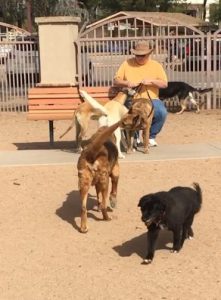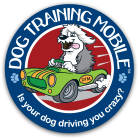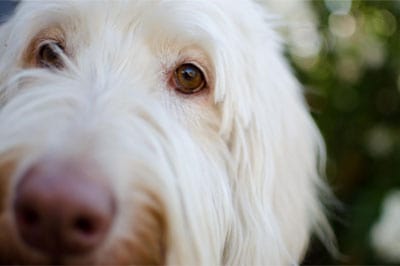DOG PARK SAFETY TIPS
- Gerard Raneri
- May, 21, 2017
- Behavioral Issues, Safety
- Comments Off on DOG PARK SAFETY TIPS
by Gerard Raneri
Dog Training Mobile
Our Tucson heat can become brutal in the summer as most of us already know. Our dogs may have it even worse in some situations. They can’t always tell you what they need, it’s up to us to pay attention.
For the dog park goers there is only two times of the day that they can safely take their dogs to the dog park. The first is early mornings before the temperature rises, the second is the evening when the temperature starts to drop. Many folks rush to the dog park before work, when we are in a rush it’s easy to over look things.
Because of the summer heat our dog parks tend to become a bit more crowded during those cooler times of the day. If it’s your dogs first or second visit to the dog park be careful, they could be intimidated when a pack of dogs approaches. It’s always best to make sure your dog is calm before ever entering the dog park.
Here are some tips to help keep your dogs safe. Always keep in mind your dogs breed, the shorter the snout, the quicker they can over heat.
- Know your dog’s personality. Not all dogs enjoy socializing. Don’t let your dog get overwhelmed by meeting a large pack of dogs on his first few times at the dog park. Test your dog before ever going to a dog park by introducing him first to a friend’s or family member’s dog. Do this in a controlled situation such as a back yard or a fenced area. Take your time and go slow.
- Is your dog healthy? Confirm that all of your dog’s shots are up-to-date. If your dog is recovering from a recent surgery or illness, postpone a dog park visit until he is fully recuperated.
- Observe. We always recommend your first visit to your local Tucson Dog Park should be without your dog. This allows you—your dog’s pack leader—to learn the park rules and familiarize yourself with the surroundings. When you are ready to bring your dog to the dog park, watch the group inside the park first. If the dogs seem too rough for your dog, plan to return at another time or try a different park. If your dog seems overly excited watching other dogs, teach him to relax at the park by just sitting quietly with him in the park area on your first few visits.
- Start out slow. The first few visits to the dog park should be brief—15 minutes or less. Then slowly increase your time as your dog becomes more secure with the dog park situation. Not all dogs are meant for dog parks. If your dog is naturally fearful or timid, he simply may not be a good fit with more dominant dogs.
- Consider choose off hours (weather permitting) to visit the dog park. Try to visit on weekdays, especially around midday. Avoid going on

weekends and after work, as those are generally the busiest times.
- Always stay focused on your dog. Don’t get distracted talking to other dog owners. Always watch all the dogs’ body language to help you avoid any trouble before it begins. Keeping an eye on your own dog’s body language will help you know when he’s becoming stressed or fearful. If this happens, redirect his attention back to you to help him feel safe.
- Let your dog off leash the moment you enter unleashed areas. Aggressive behaviors can result between a leashed dog and a dog that’s running free. Leashed dogs, and their owners, project body language that can be threatening, and keeping your dog on the leash will only make things worse. A leashed dog is unable to make his instinctual decisions. He cannot opt to take flight, so he may feel he has to fight to survive the situation. The fight or flight response.
- Young children should not be inside a dog park. It’s impossible to safely watch your child and your dog at the same time. If a fight breaks out, your child could easily get hurt. In addition, children running in a dog park can trigger the dogs to chase them—an extremely dangerous situation.
- Leave young puppies at home. Puppies aged less than four months aren’t fully immunized yet and are at risk for diseases such as, but not limited to parvovirus. Also, take care to avoid allowing your pup to experience any negative interactions with other canines. Your pup’s socialization education will be impeded negatively if a dog is aggressive to him. A dog park filled with strange dogs is a poor place to start socializing a young pup; start one-on-one with other young puppies and build slowly.
- Do not bring treats or toys. Most parks already have plenty of balls and toys that other people have left behind. Also, it is very common to see dogs exhibit food aggression or resource guarding when treats and toys are introduced. Avoid this behavior potential by not having these triggers in the first place. Some dogs will actually become aggressive if another dog goes near their ball. This behaviour is not suitable for dog parks, I suggest resolving this issue before taking your dog to the dog park, as it’s not fair to the other dogs or dog owners.
- Canine body language. Educate yourself about canine body language and calming signals so you learn the difference between fear, play, dominance and aggression.
- Know when it’s time to leave. Leave on a positive note, before a negative experience can happen. If you notice your dog becoming stressed or afraid, or he’s being chased by the pack, step up to your role as your dog’s leader to keep your pack safe.
- Trust your gut and leave if the situation isn’t feeling right.
For help with training your dog or if you have questions feel free to visit my website. We also offer free tips on our website www.dogtrainingtucsonaz.com




